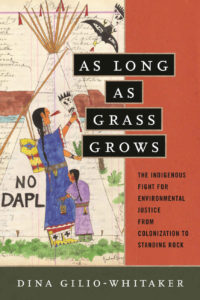First/American Indian Nations (FAIN) Solidarity
An Indigenous Peoples’ History of the United States
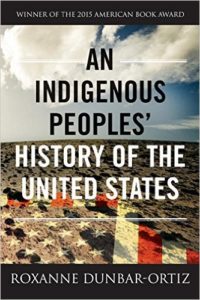
Roxanne Dunbar-Ortizoffers a history of the United States told from the perspective of Indigenous peoples and reveals how Native Americans, for centuries, actively resisted expansion of the US empire. InAn Indigenous Peoples’ History of the United States, Dunbar-Ortiz adroitly challenges the founding myth of the United States and shows how policy against the Indigenous peoples was colonialist and designed to seize the territories of the original inhabitants, displacing or eliminating them.
The Bitter Waters of Medicine Creek: A Tragic Clash Between White and Native America
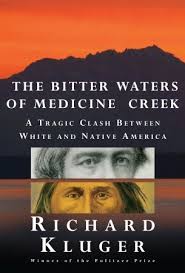
Pulitzer Prize-winner Richard Kluger brings to life a bloody clash between Native Americans and white settlers in the 1850s Pacific Northwest. After he was appointed the first governor of the state of Washington, Isaac Ingalls Stevens had one goal: to persuade the Indians of the Puget Sound region to leave their ancestral lands for inhospitable reservations. But Stevens’s program–marked by threat and misrepresentation–outraged the Nisqually tribe and its chief, Leschi, sparking the native resistance movement. Tragically, Leschi’s resistance unwittingly turned his tribe and himself into victims of the governor’s relentless wrath. The Bitter Waters of Medicine Creekis a riveting chronicle of how violence and rebellion grew out of frontier oppression and injustice.
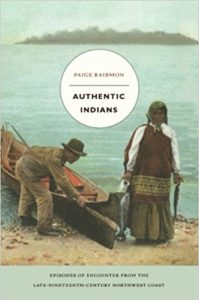 Authentic Indians: Episodes of Encounter from the Late-Nineteenth-Century Northwest Coast
Authentic Indians: Episodes of Encounter from the Late-Nineteenth-Century Northwest Coast
By Paige Raibmon. In this innovative history, Paige Raibmon examines the political ramifications of ideas about “real Indians.” Focusing on the Northwest Coast in the late nineteenth century and early twentieth, she describes how government officials, missionaries, anthropologists, reformers, settlers, and tourists developed definitions of Indian authenticity based on such binaries as Indian versus White, traditional versus modern, and uncivilized versus civilized. They recognized as authentic only those expressions of “Indianness” that conformed to their limited definitions and reflected their sense of colonial legitimacy and racial superiority. Raibmon shows that Whites and Aboriginals were collaborators—albeit unequal ones—in the politics of authenticity. Non-Aboriginal people employed definitions of Indian culture that limited Aboriginal claims to resources, land, and sovereignty, while Aboriginals utilized those same definitions to access the social, political, and economic means necessary for their survival under colonialism.
Native Roots: How the Indians Enriched America
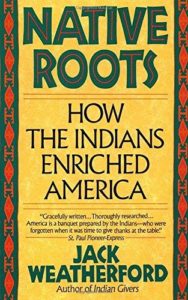
By Jack Weatherford. Conventional American history holds that the white settlers of the New World re-created the societies they had known in England, France, and Spain. But as anthropologist Jack Weatherford, author of INDIAN GIVERS, brilliantly shows, the Europeans actually grafted their civilization onto the deep and nourishing roots of Native American customs and beliefs. Our place names, our farming and hunting techniques, our crafts, the very blood that flows in our veins–all derive from American Indians ways that we consistently fail to see.
Indigenous American Women: Decolonization, Empowerment, Activism
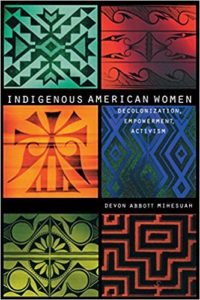
Oklahoma Choctaw scholar Devon Abbott Mihesuah offers a frank and absorbing look at the complex, evolving identities of American Indigenous women today, their ongoing struggles against a centuries-old legacy of colonial disempowerment, and how they are seen and portrayed by themselves and others.
The Absolutely True Diary of a Part-Time Indian

By Sherman Alexi. This is written in a first-person narrative from the perspective of Native American teenager Arnold Spirit Jr., also known as “Junior”, a 14-year-old budding cartoonist. The book is a bildungsroman, detailing Junior’s life on the Spokane Indian Reservation, and his decision, upon encouragement from a reservation high school teacher, to go to an all-white public high school in the off-reservation town of Reardan, Washington.
In the Light of Justice: The Rise of Human Rights in Native America and the UN Declaration on the Rights of Indigenous Peoples
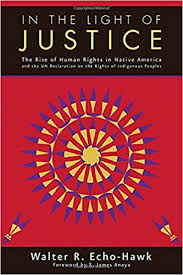
By Walter EchoHawk. In 2007 the United Nations approved the United Nations Declaration on the Rights of Indigenous Peoples. United States endorsement in 2010 ushered in a new era of Indian law and policy. This book highlights steps that the United States, as well as other nations, must take to provide a more just society and heal past injustices committed against indigenous peoples. It examines the proposition that Native American rights are inalienable human rights. It urges Indian Country to stride toward the human rights framework created by the UN Declaration of the Rights of Indigenous Peoples (“UNDRIP”). Relying on atonement and forgiveness traditions, it asks the United States to heal wounds of the past and create a more just society by implementing the UNDRIP.
Pagans in the Promised Land: Decoding the Doctrine of Christian Discovery
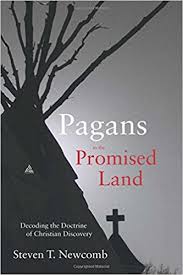
By Steven T. Newcomb. In 1793, the Indians of the Northwest Territory de- clared themselves “free to make any bargain or cession of lands, whenever & to whomsoever we please.” Three decades later, however, the United States Supreme Court held in Johnson v. M’Intosh that the original inhabitants of America “are to be considered merely as occupants, to be protected, indeed, while in peace, in the possession of their lands, but to be deemed incapable of transferring the absolute title to others.” Chief Justice John Mar- shall concluded that the rights of Indians “to complete sovereignty, as independent nations, were necessarily diminished . . . by the original fundamental principle, that discovery gave exclusive title to those who made it.” This “doctrine of discovery” has never been repudiated by the United States and remains a basic principle of federal Indian law. ~Blake A. Watson
Indians of the Pacific Northwest: From the Coming of the White Man to the Present Day
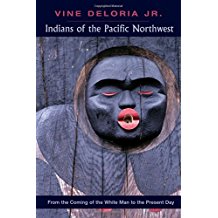
By Vine Deloria, Jr. The definitive and moving account of the Pacific Northwest tribes and their struggle to maintain their culture and traditional homelands. The Pacific Northwest was one of the most populated and prosperous regions for Native Americans before the coming of the white man. By the mid-1800s, measles and smallpox decimated the Indian population, and the remaining tribes were forced to give up their ancestral lands. Vine Deloria Jr. tells the story of these tribes fight for survival, one that continues today.
Where the Salmon Run: The Life and Legacy of Billy Frank, Jr.”
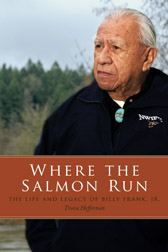
By Trova Heffernan. Recommended by Northwest Treaty Tribes (communication effort of the Northwest Indian Fisheries Commission.) Where the Salmon Runtells the life story of Billy Frank Jr., from his father’s influential tales, through the difficult and contentious days of the Fish Wars, to today. Based on extensive interviews with Billy, his family, close advisors, as well as political allies and former foes, and the holdings of Washington State’s cultural institutions, we learn about the man behind the legend, and the people who helped him along the way.
Download copy from State of Washington Legacy Project.
All the Real Indians Died Off”: And 20 Other Myths About Native Americans
By Roxanne Dunbar-Ortiz and Dian Gilio-Whitaker. In this enlightening book, scholars and activists Roxanne Dunbar-Ortiz and Dina Gilio-Whitaker tackle a wide range of myths about Native American culture and history that have misinformed generations. Tracing how these ideas evolved, and drawing from history, the authors disrupt long-held and enduring myths such as:
“Columbus Discovered America”
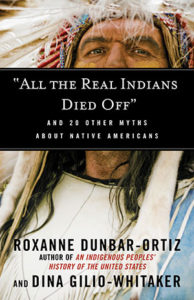 “Thanksgiving Proves the Indians Welcomed Pilgrims”
“Thanksgiving Proves the Indians Welcomed Pilgrims”
“Indians Were Savage and Warlike”
“Europeans Brought Civilization to Backward Indians”
“The United States Did Not Have a Policy of Genocide”
“Sports Mascots Honor Native Americans”
“Most Indians Are on Government Welfare”
“Indian Casinos Make Them All Rich”
“Indians Are Naturally Predisposed to Alcohol
Each chapter deftly shows how these myths are rooted in the fears and prejudice of European settlers and in the larger political agendas of a settler state aimed at acquiring Indigenous land and tied to narratives of erasure and disappearance. Accessibly written and revelatory, “All the Real Indians Died Off”challenges readers to rethink what they have been taught about Native Americans and history.
Custer Died For Your Sins: An Indian Manifesto
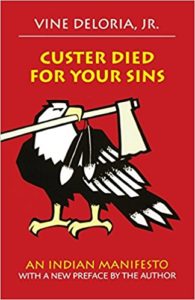
By Vine Deloria, Jr. Custer Died for Your Sins: An Indian Manifesto, a collection of eleven essays and an afterword on a variety of topics related to American Indian social, legal, and political issues of the 1960’s. Coming at the end of a decade in which the fundamental values of American culture were being rigorously questioned, when American history was being rewritten, and when the younger generation was eagerly searching for alternative lifestyles, Deloria’s book quickly became a best seller praised for the wit, the humor, and the energy of its style as well as for its articulate and witty presentation of the Native American point of view and its penetrating critique of mainstream American culture.
Tell the Truth: The Collected Columns of Billy Frank Jr.
 By Billy Frank, Jr. Recommended by Northwest Treaty Tribes (communication effort of the Northwest Indian Fisheries Commission). For years, as Chairman of the Northwest Indian Fisheries Commission, Billy Frank Jr. wrote a column called Being Frank. From September 1986 to May 2014, these columns ran in NWIFC publications and newspapers across the region. His words document the challenges that tribes faced as we exercised our treaty rights, fought to responsibly manage fisheries, and raised our voice against the loss of salmon habitat. The political players and news headlines changed over the years, but Billy’s message remained the same: We must recover wild salmon populations to levels that can sustain harvest. We are losing habitat faster than it can be restored, and hatchery programs are essential to make up for the lost and damaged habitat. This book brings together for the first time every Being Frank column Billy wrote. It also serves as a reminder for us to keep on telling the truth.~ Lorraine Loomis, NWIFC Chair
By Billy Frank, Jr. Recommended by Northwest Treaty Tribes (communication effort of the Northwest Indian Fisheries Commission). For years, as Chairman of the Northwest Indian Fisheries Commission, Billy Frank Jr. wrote a column called Being Frank. From September 1986 to May 2014, these columns ran in NWIFC publications and newspapers across the region. His words document the challenges that tribes faced as we exercised our treaty rights, fought to responsibly manage fisheries, and raised our voice against the loss of salmon habitat. The political players and news headlines changed over the years, but Billy’s message remained the same: We must recover wild salmon populations to levels that can sustain harvest. We are losing habitat faster than it can be restored, and hatchery programs are essential to make up for the lost and damaged habitat. This book brings together for the first time every Being Frank column Billy wrote. It also serves as a reminder for us to keep on telling the truth.~ Lorraine Loomis, NWIFC Chair
Messages from Frank’s Landing
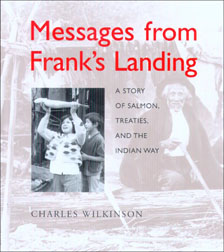 By Charles Wilkinson. Recommended by Northwest Treaty Tribes (communication effort of the Northwest Indian Fisheries Commission). In Messages from Frank’s Landing, Charles Wilkinson explores the broad historical, legal, and social context of Indian fishing rights in the Pacific Northwest, providing a dramatic account of the people and issues involved. He draws on his own decades of experience as a lawyer working with Indian people, and focuses throughout on Billy Frank and the river flowing past Frank’s Landing. In all aspects of Frank’s life as an activist, from legal settlements negotiated over salmon habitats destroyed by hydroelectric plants, to successful negotiations with the U.S. Army for environmental protection of tribal lands, Wilkinson points up the significance of the traditional Indian world view – the powerful and direct legacy of Frank’s father, conveyed through generations of Indian people who have crafted a practical working philosophy and a way of life. Drawing on many hours spent talking and laughing with Billy Frank while canoeing the Nisqually watershed, Wilkinson conveys words of respect and responsibility for the earth we inhabit and for the diverse communities the world encompasses. These are the messages from Frank’s Landing. Wilkinson brings welcome clarity to complex legal issues, deepening our insight into a turbulent period in the political and environmental history of the Northwest.
By Charles Wilkinson. Recommended by Northwest Treaty Tribes (communication effort of the Northwest Indian Fisheries Commission). In Messages from Frank’s Landing, Charles Wilkinson explores the broad historical, legal, and social context of Indian fishing rights in the Pacific Northwest, providing a dramatic account of the people and issues involved. He draws on his own decades of experience as a lawyer working with Indian people, and focuses throughout on Billy Frank and the river flowing past Frank’s Landing. In all aspects of Frank’s life as an activist, from legal settlements negotiated over salmon habitats destroyed by hydroelectric plants, to successful negotiations with the U.S. Army for environmental protection of tribal lands, Wilkinson points up the significance of the traditional Indian world view – the powerful and direct legacy of Frank’s father, conveyed through generations of Indian people who have crafted a practical working philosophy and a way of life. Drawing on many hours spent talking and laughing with Billy Frank while canoeing the Nisqually watershed, Wilkinson conveys words of respect and responsibility for the earth we inhabit and for the diverse communities the world encompasses. These are the messages from Frank’s Landing. Wilkinson brings welcome clarity to complex legal issues, deepening our insight into a turbulent period in the political and environmental history of the Northwest.
Indian Givers: How the Indians of the Americas Transformed the World
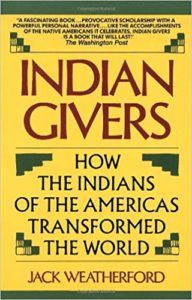
By Jack Weatherford. After 500 years, the world’s huge debt to the wisdom of the Indians of the Americas has finally been explored in all its vivid drama by anthropologist Jack Weatherford. He traces the crucial contributions made by the Indians to our federal system of government, our democratic institutions, modern medicine, agriculture, architecture, and ecology, and in this astonishing, ground-breaking book takes a giant step toward recovering a true American history.
God is Red

By Vine Deloria, Jr. First published in 1972, God Is Redremains the seminal work on Native religious views, asking new questions about our species and our ultimate fate. Celebrating three decades in publication with a special 30th anniversary edition, this classic work reminds us to learn “that we are a part of nature, not a transcendent species with no repsponsibilities to the natural world.” It is time again to listen to Vine Deloria Jr.’s powerful voice, telling us about religious life that is independent from Christianity and that reveres the interconnectedness of all living things.
Bury My Heart At Wounded Knee
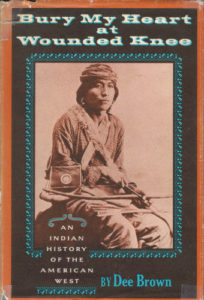
By Dee Brown. This book is a classic and a must read for non-Indians preparing to journey into Indian Country. While it covers the West, it does expose the pattern of exploitation, racism, hatred and greed which have been the foundation of Indian relations throughout this country and throughout the world. Dee Brown writes about some of the more signification pieces of history of American Indian communities in the West during the late nineteenth century. The book also explores some of the major points in the history of new found American expansionism and the unconscionable effects it had on indigenous communities. It explores the destruction of American Indian communities and culture through forced relocations, military tactics, governmental policies and racist colonial attitudes.
The Sacred Hoop: Recovering the Feminine in American Indian Traditions

By Paula Allen Gunn. A collection of 17 essays representing more than a decade of cultural research, Native American author and scholar Paula Gunn Allen challenges five centuries of misconceptions surrounding the role of Native American women in many “pre-contact” tribal societies; misconceptions the author contends have ” . . . transformed and obscured what were once woman-centered cultures. . . .”
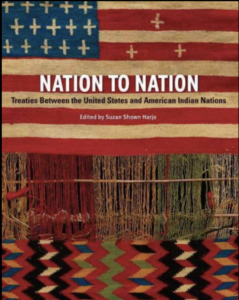 Nation to Nation: Treaties Between the United States and American Indians
Nation to Nation: Treaties Between the United States and American Indians
Suzan Shown Harjo
Unitarians and the Bond Mission School
Journal of Universalist History Volume XLI (2017-2018) Special Issue: 2016 Convocation of Unitarian Universalist Studies Editor: Kathleen R. Parker 2018, Unitarian Universalist History and Heritage Center
The Montana Industrial school for Indians at Romona Ranch, 1886-1897
by Dana Capasso Stivers, pgs. 38 - 65 Dana Capasso Stivers has, so far to date, offered up one of the more accurate versions of the American Unitarian Association and it's role in the Indian boarding school tragedy, specifically with the Montana Industrial School for Indians, better known as the Bond Mission School. Many of the other, more recent writings on the Bond Mission School skirted around and glossed over a number of issues and attitudes of our predecessors and their participation in aiming "to assimilate the Crow people into Anglo-Saxon society and to dismantle their culture through various forms of symbolic violence."
CHANGING THE NARRATIVE ABOUT NATIVE AMERICANS A GUIDE FOR ALLIES
Being Native American may mean being deeply involved in protecting, teaching and advancing the knowledge and traditions of one’s tribe(s). Or it may mean being less connected to tribal communities while maintaining unique Native American identities in other ways within the larger society. There is no “one way” to be Native American. Every tribe and tribal citizen has a unique culture, history and tradition, and many people identify more as a citizen of a specific tribe(s) than collectively as Native American. Even with such a strong identity, contributions and presence, however, contemporary Native Americans are largely invisible to the rest of the country. Native American voices are rarely heard in the news, in popular culture or in history books, and what little isreflected in those venues about Native issues and cultures is riddled with misinformation and confusion. A group of diverse Native and non-Native stakeholders from across the country has conducted unprecedented research and developed a strategy to change this situation as part of an initiative called Reclaiming Native Truth. This initiative is designed to eradicate harmful and toxic narratives, stereotypes, structural and institutional racism, dehumanization, and the invisibility of Native Americans. It aims to increase access to opportunities and rights and to ensure that Native Americans live in a society where they are celebrated as a vital part of the fabric of the United States as both leaders and key contributors. Read more: RNT - Guide for Allies
Reclaiming Native Truth - Lessons Learned from Standing Rock
The California Native American Genocide - Two books reviewed
The first comprehensive treatments of this subject were published very recently, in 2012 and 2014. These are An American Genocide: The United States and the California Indian Catastrophe, 1846-1873 by Benjamin Madley, and Murder State: California’s Native American Genocide, 1846-1873 by Brendan Lindsay. . . .
Over the past few months, I’ve read these books and have been working on this report. More than any other aspect of local history I’ve written about, this has been the most difficult. This is not because these books are not well-written. It is because this topic is, to quote Madley, “unrelentingly grim.” This project has taken me longer than normal because it is emotionally very heavy. It is profoundly disturbing and unpleasant.
Read more here.
Our Moment of Choice
Asserting Native Resilience: Pacific Rim Indigenous Nations Face the Climate Crisis
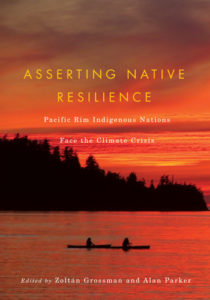 Zoltán Grossman and Alan Parker, Editors
Zoltán Grossman and Alan Parker, Editors
As Long as Rivers Run - Recommended Film - First American Indian Nations
As Long As Rivers Run tells the story of the struggles of the Nisqually Tribe, and of Billy Frank, Jr., in particular, who led in the defense of the tribe’s fishing rights that were established by treaty in 1854 but denied. This tale of persistent personal and tribal bravery in the face of government brutality culminated in the Bolt Decision of 1974. The decision confirmed the Treaty provision that First American Indian Nations in Washington have claim to 50% of the salmon take in Washington State each year. Consequently, they must have an equal voice in salmon sustainability planning. The Nisqually Tribe’s efforts to preserve salmon spawning streams and surrounding natural habitats, through advocacy of environmental protection policies are enhanced by the work of the non-profit organization, Salmon Defense.
